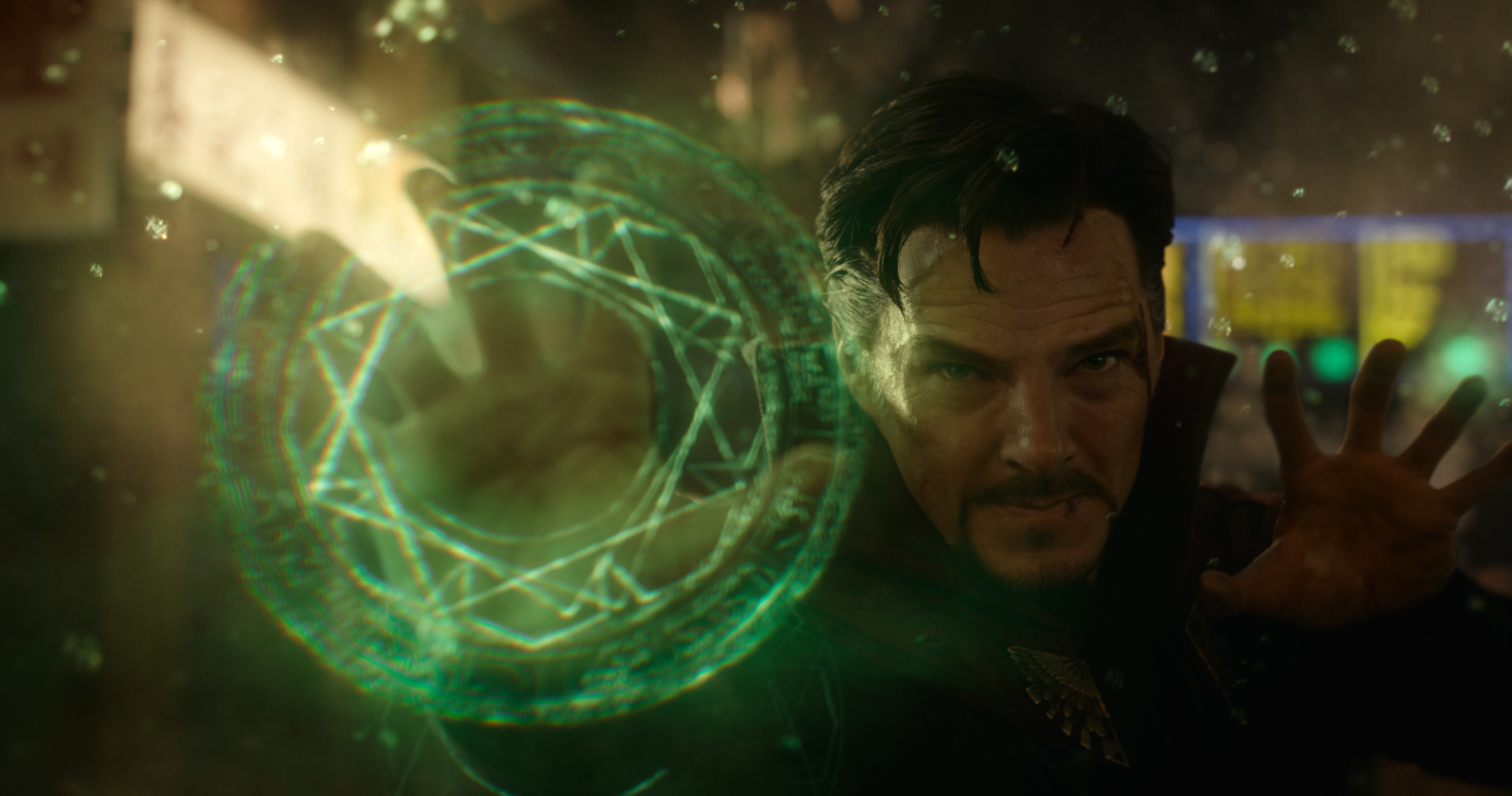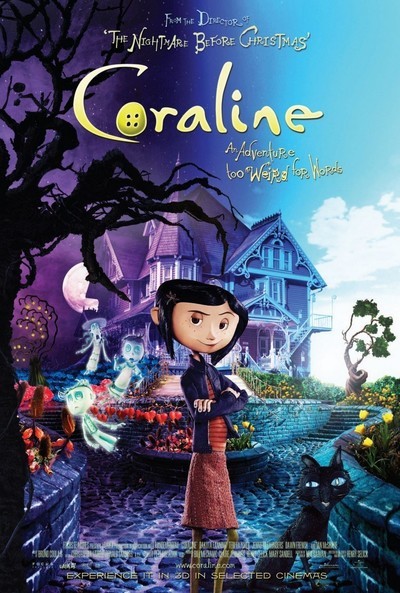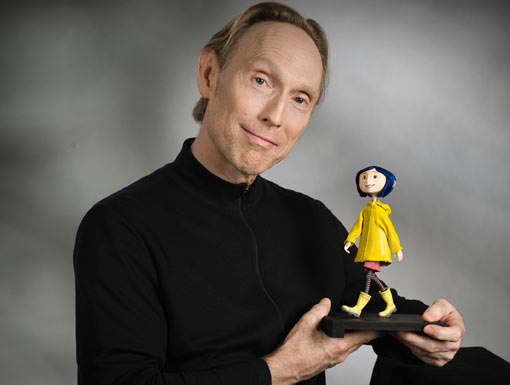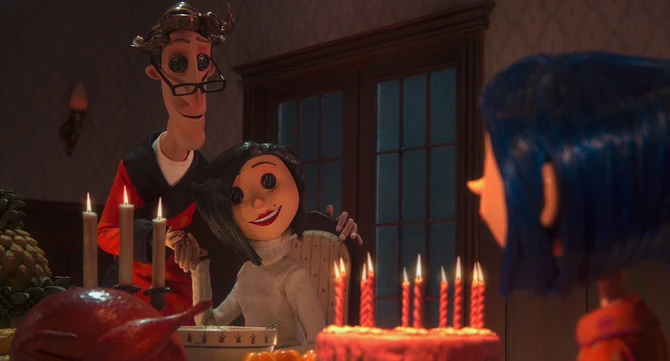Superheroes have truly taken over the screen. With an avalanche of titles heading our way and Marvel and DC battling to a never-ending conclusion to make them as profitable as possible, it is fair to say that fatigue is creeping in. Audiences were split over Batman v Superman and Suicide Squad and even Marvel with Captain America: Civil War, while making a good film, struggled to balance the familiar with something new. No doubt eyes rolled amongst some when Marvel and DC presented their upcoming film calendar planned well into the next decade. Seemingly, Doctor Strange (a classic, but odd, character created by Steve Ditko in the early 1960s) seems to follow a similar structure to past Marvel films - a flawed yet likeable lead gaining superpowers after a life changing event and uses them to combat an underwritten villain and establish their place in Marvel's cinematic empire. All this is there but the film pushes itself one step further than lazier origin films by casting a very likeable lead, a Hogwarts-esque setting, good comedy and, most importantly, incredible triply visuals.
Doctor Stephen Strange (Benedict Cumberbatch) is an arrogant neurosurgeon who is involved in a horrendous car accident leading him to lose control of his hands. Emotionally destroyed, he first seeks the best medical advice in the world only to learn it will be a useless endeavour. He hears a rumour from a former paraplegic who is now able to walk again that there is an ancient technique in the middle of Nepal that could heal his hands (as it healed his body). Dr. Strange ventures to Nepal and meets the Ancient One (Tilda Swinton) who opens his eyes to the multiverse, astral planes and her ability to draw upon its power to create magic. If he could master this art, he could be able to use it to control his hands again. Strange takes up residence in the Ancient One's school (see the Harry Potter comparison) hoping to achieve these goals. However, Strange's lessons are interrupted by the nefarious schemes of Kaecillius (Mads Mikkelson) (who I am just going to call Kae from now on), who is planning on opening the door to the dark dimension, the home of the evil-being Dormammu hoping to unleash him on Earth, in exchange for gifting him eternal life. Strange is forced into his biggest challenge yet as he grapples with his own ego and the fate of the universe...
So the plot and trappings are incredibly goofy. However, the films sells it mostly thanks to Benedict Cumberbatch's performance. Admittedly, I am not the biggest fan of his past performances but he is perfectly cast as Dr. Strange - egotistical, brilliant, funny, cocky, Cumberbatch is able to bring a Robert Downey Jr. vibe to the character whilst also making it his own thing. He is suddenly thrust into a world where people no longer find his corny, Joss Wheadon-quips funny (though there is a great scene involving a wi-fi password - I will say no more). A man of science coming up against the mystic arts is interesting, funny and kind of profound at times, as Strange has to grapple with lure of immortality and letting go of his preconceived notions of the universe. It works really well, surprisingly well! There are some border line schlock moments but these are managed well. What's important is that we are emotionally invested in Dr. Strange's struggle making it all the more satisfying as he comes to accept his place in the wider universe.
The comedic highlights of Strange come from its secondary characters, especially from a particularly funny turn by the brilliant Benedict Wong, playing the stone faced, newly elected librarian Wong, which is played up for great laughs. Chiwetel Eijfor plays Mordo, a pupil at the Ancient One's school and while not the most special character in the world, he is an effective foil to Strange and does go on a semi-interesting arc. One of Marvel's bug-bears, outside of underwritten villains, is equally under-written love interests. Rachel McAdams does the best she can with the material in the role of Christine Palmer, a fellow doctor, but can't get past the script's fundamental disinterest in her. Which is a complete shame. Bizaarely, one of the most fun 'characters' is Doctor Strange's cape, which feels like Aladdin's Carpet's long lost (and more well tailored) cousin and actually gets one of the biggest laughs in the film - again, I will say no more.
The casting of Tilda Swinton has been controversial as the Ancient One in the comic is a Tibetian male and now played as being a white Celtic woman living in Nepal. While I will not get into the politics of this casting decision in the this review, it does highlight that white-washing is still a terrible part of the film-industry and is also unfortunately informed by the state of global affairs. That said, it should be noted that Swinton plays the Ancient One as a non-binary character, a massive step forward for gender representation not just for Marvel (who have only just grappled with sexuality - straight and gay! - on the excellent TV series Jessica Jones) but also the film industry. Marvel have been fairly adamant in response to criticism that the gender of the character does not matter and that it is simply in the eye of the beholder. So while on the one hand, yes the decision to white-wash the character does deny a Tibetan actor the chance to take on the role, it is used to at least push another form of positive representation. I'm not saying what should have been the right decision, more taking what I can..In any case, the Ancient One is essentially the Merlin or Obi-Wan Kenobi of the film (which, again, it is rare that this role is played by a woman) and Swinton is clearly relishing the chance to play this role. She opens Dr. Strange's mind to the power of the universe and its endless possibilities, though she is hiding a much darker secret. One of the most effective and philosophical moments comes at the end of Act Two and is about as profound as Marvel can get.
With all Marvel Cinematic Universe properties (bar Loki in The Avengers and Kilgrave from Jessica Jones) the villain is one of the bigger let-downs. Maybe not to the extent of past films, as Doctor Strange and Kae do exchange interesting notions to each other, the villain does feel underwritten to the point of posing no real threat (outside of his evil scheme). Some fans of the comics might be disappointed by Dormammu as well (his design differs greatly to comics and does not have a lot of screen time), however the sequence he is featured in towards the end of the film is one of Marvel's greatest, and most unexpected scenes, which will go down with the likes of Hulk unexpectedly bashing Loki around in The Avengers as one of the classic moments in the MCU. I understand that with an origin film the hero should be the main focus but Marvel needs to work on its Big Bads...
Finally, I want to discuss the visuals of the film. This is easily Marvel's most ambitious film to date in terms of creating new and exciting action scenes. Dr. Strange's initial voyage through the multiverse is like something out 2001: A Space Odyssey for its bright colours and trippy visuals. Better yet, this same ambition is employed during action sequences where Kae and the Ancient One are able to bend reality around them to create three-dimensional mazes out of New York. It is vibrant, inventive and incredibly fun to watch. This becomes even better when Dr. Strange discovers the power to manipulate time. As the sequence moves in reverse (objects, extras etc.), the heroes and villains fight at normal speed. Marvel's doctorate to try something different visually with each film (whilst sticking to a very familiar framework) make them a treat to watch (mostly) and Doctor Strange is no exception. One of the big selling points is its visuals and it does not let down at all. It actually manages to outdo the similar reality bending antics of Inception.
Doctor Strange feels like a very familiar film at this point, especially in the sea of superhero films on the horizon, but its strong central performance, good comedy, fascinating central concepts, hints at existential themes and excellent trippy actions sequences make up for the script's downfalls, which come in the expected places for MCU films. I was ready for a second to maybe even third tier Marvel film but the shortcomings are made up for in the right places, which manages to make Doctor Strange engaging and, more importantly, fun. For the first time in a long while, I'm actually interested in how the introduction of a new hero into the MCU will affect the wider narrative arc of these films. Doctor Strange is another example of Marvel's winning formula to create interesting, engaging and sometimes even thoughtful blockbusters.
Rating: 8/10














